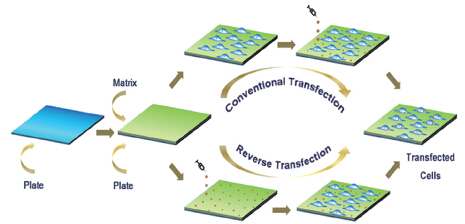| [1] Palsson B, Andreadis S. Exp. Hematol., 1997, 25: 94.
[2] Ziauddin J, Sabatini D M. Nature, 2001, 411: 107.
[3] Bengali Z, Pannier A K, Segura T, Anderson B C, Jang J H, Mustoe T A, Shea L D. Biotechnol. Bioeng., 2005, 90: 290.
[4] Jewell C M, Lynn D M. Curr. Opin. Colloid Interface Sci., 2008, 13: 395.
[5] Ji Q, Yamazaki T, Hanagata N, Lee M V, Hill J P, Ariga K. Chem. Commun., 2012, 48: 8496.
[6] Wu K M, Xu J, Liu M Y, Song W, Yan J, Gao S, Zhao L Z, Zhang Y M. Int. J. Nanomed., 2013, 8: 1595.
[7] Honma K, Miyata T, Ochiya T. Curr. Drug. Discov. Tech., 2004, 1: 287.
[8] Villa-Diaz L G, Garcia-Perez J L, Krebsbach P H. Stem Cells Dev., 2010, 19: 1949.
[9] Shen H, Tan J, Saltzman W M. Nat. Mater., 2004, 3: 569.
[10] Oyane A, Wang X, Sogo Y, Ito A, Tsurushima H. Acta Biomater., 2012, 8: 2034.
[11] Nagane K, Kitada M, Wakao S, Dezawa M, Tabata Y. Tissue Eng. Part A, 2009, 15: 1655.
[12] He C X, Li N, Hu Y L, Zhu X M, Li H J, Han M, Miao P H, Hu Z J, Wang G, Liang W Q,Tabata Y, Gao J Q. Pharm. Res., 2011, 28: 1577.
[13] Solanki A, Shah S, Yin P T, Lee K B. Sci. Rep., 2013, 3: 1553.
[14] Uchimura E, Yamada S, Uebersax L, Fujita S, Miyake M, Miyake J. J. Biosci. Bioeng., 2007, 103: 101.
[15] Lin Q K, Ren K F, Ji J. Colloids Surf. B-Biointerfaces, 2009, 74: 298.
[16] Lu Z Z, Wu J, Sun T M, Ji J, Yan L F, Wang J. Biomaterials, 2008, 29: 733.
[17] Wang X F, Ren K F, Lin Q K, Ji J. Sci. China Chem., 2010, 53: 508.
[18] Yamauchi F, Kato K, Iwata H. Biochim. Biophys. Acta, 2004, 1672: 138.
[19] Holmes C A, Tabrizian M. ACS Appl. Mater. Inter., 2013, 5: 524.
[20] Tang L, Liu W, Liu G. Adv. Mater., 2010, 22: 2652.
[21] Tang L, Yang Y, Bai T, Liu W. Biomaterials, 2011, 32: 1943.
[22] Wang N, Zhang J, Sun L, Wang P, Liu W. Acta Biomater., 2014, 10: 2529.
[23] Segura T, Volk M J, Shea L D. J. Control. Release, 2003, 93: 69.
[24] Segura T, Chung P H, Shea L D. Biomaterials, 2005, 26 (13): 1575.
[25] Segura T, Shea L D. Bioconjugate Chem., 2002, 13: 621.
[26] Carbone R. Peptide Microarrays: Methods in Molecular Biology, Walker J M (Ed.).Clifton: Humana Press, 2009. 339.
[27] Park I K, Von Recum H A, Jiang S Y, Pun S H. Langmuir, 2006, 22: 8478.
[28] Zheng J, Manuel W S, Hornsby P J. Biotechnol. Progr., 2000, 16: 254.
[29] Bonadio J, Smiley E, Patil P, Goldstein S. Nat. Med., 1999, 5: 753.
[30] Yin L C, Zhao X, Ji S Z, He C. B, Wang G Y, Tang C, Gu S, Yin C. Biomaterials, 2014, 35: 2488.
[31] Elangovan S, DMello S R, Hong L, Ross R D, Allamargot C, Dawson D V, Stanford C M, Johnson G K, Sumner D R, Salem A K. Biomaterials, 2014, 35: 737.
[32] Jewell C M, Zhang J, Fredin N J, Wolff M R, Hacker T A, Lynn D M. Biomacromolecules, 2006, 7: 2483.
[33] Fujita S, Ota E, Sasaki C, Takano K, Miyake M, Miyake J. J. Biosci. Bioeng., 2007, 104: 329.
[34] Chen P C, Huang Y Y, Juang J L. Lab Chip, 2011, 11: 3619.
[35] Mannherz O, Mertens D, Hahn M, Lichter P. Genomics, 2006, 87: 665.
[36] Chia N Y, Chan Y S, Feng B, Lu X Y, Orlov Y L, Moreau D, Kumar P, Yang L, Jiang J, Lau M S, Huss M, Soh B S, Kraus P, Li P, Lufkin T, Lim B, Clarke N D, Bard F, Ng H H. Nature, 2010, 468: 316.
[37] Whitehurst A. W, Bodemann B O, Cardenas J, Ferguson D, Girard L, Peyton M, Minna J D, Hao W, Roth M G, Xie X J, White M A. Nature, 2007, 446: 815.
[38] Erfle H Neumann B, Liebel U, Rogers P, Held M, Walter T, Ellenberg J, Pepperkok R. Nat. Protoc., 2007, 2: 392.
[39] Choi S, Yu X H, Paiboonkit L J, Hollister S J, Murphy W L. Sci. Rep., 2013, 3: 1567.
[40] Kato K, Umezawa K, Miyake M, Miyake J, Nagamune T. Biotechniques, 2004, 37: 444.
[41] Li C Y, Yuan W, Jiang H, Li J S, Xu F J, Yang W T, Ma J. Bioconjugate Chem., 2011, 22: 1842.
[42] Yuan W, Li C, Zhao Y, Chen Z, Sui C G, Yang W T, Xu F J, Ma J. Adv. Fuct. Mater., 2012, 22: 1835.
[43] Bae J, Goto S, Mie M, Kobatake E. J. Biotechnol., 2010, 150: 447.
[44] Rea J C, Gibly R F, Davis N E, Barron A E, Shea L D. Biomacromolecules, 2009, 10: 2779.
[45] Uchimura E, Yamada S, Nomura T, Matsumoto K, Fujita S, Miyake M, Miyake J. J. Biosci. Bioeng., 2007, 104: 152. |
